QuestionQUESTION: I just purchased a baby leopard gecko yesterday from petco with a full 10 gallon tank kit. I am feeding it mealworms but it hasn't even touched them or gone to the bathroom. She has a fat tail so she should be healthy.
Why isn't she eating?is she just nervous around her new home? Or am I already doing something wrong?
Please help fast
ANSWER: Hi Jessica,
I am including a basic care sheet to help you out with the care your leo needs. In it you can read about proper temperatures, diet, humidity, etc. Also, if the kit came with sand, please remove it and any other loose litter, bark, etc that the store may have recommended as they are not safe in any way for a leo. I offer suggestions as to safe things to use on the floor of the tank in the care sheet. Sand, especially what they call the "edible" sand is deadly as it causes internal blockages.
Since you just got your leo yesterday, no need to panic as they stress very easy and a move to a new home is very stressful. To help her, be sure to place her tank in an area that is basically quiet, away from other pets.
Your 10 gallon tank is fine for now, but when she reaches her adult size in a few months, I do suggest switching to a 20 gallon tank. The 20 gallon long tank is much easier to get set up properly with temperatures, hides, etc.
Double check your temperatures with a good thermometer(not a stick on strip or dial) on the floor of her warm hide, which is usually where they spend their days. Remember, they are nocturnal so they are not really active during the day. Best time to offer food is in early evening. Incorrect temperatures are another big reason for not eating.
If the mealworms are too big, she will not try to eat them. Try smaller mealworms or small crickets that are properly sized for her. You don't want anything larger than the space between her eyes or longer than her head.
Its good her tail is fat. If after a few days she still isn't eating, or starts acting ill, then a vet visit is needed for a parasite check. When they are stressed, their internal parasite load can increase, causing a decrease in appetite. If she isn't eating, there is nothing to come out the other end. Also, leos generally poop in the same spot, many times hiding it in one of their hides in the tank, usually an area farthest from their warm hide. Its important to keep her hydrated so be sure to lightly mist the sides of the tank when she is out. You can also offer her watermelon which she may lick at to get the juice from it. If she isn't taking in water, very carefully offer her water from an eye dropper, one tiny drop at a time but do be very careful of her nostrils.
BASIC CARE FOR A LEOPARD GECKO
Leopards are pretty easy to care for but they do need
special care. Here are some of the basic needs of your gecko.
HOUSING: The need to have at least a 20 gallon long tank for one Leo. This needs to have a secure fitting screen top...they can be quite the escape artists!!! They need to have a humid hide box.You can make this with something as simple as a small plastic dish with a hole cut in one side and a small mesh bag filled with some Sphagnum moss coconut bark or Peat moss that you mist.
I made mine out of the small plastic folgers coffee containers...I cut an opening in the lid..and put the moss in..they LOVE it. I use the terrarium moss in mine.
I use that on the warm side of the tank. Be sure to provide a cool hidebox on the other end. I also provide a mid temperature hide...which is in the middle of the tank.I use the critter caves which you can purchase. NOT the ones that have heat in them!!!!
Provide secure climbing areas for your gecko. Fake plants, rocks and branches are all fine to use. be sure there are no wires or sharp ends to any fake plants you use.
*****SUBSTRATE:(that's the stuff on the floor of your tank) Newspaper, lizard carpet or paper towels work great and are easy to clean and are much safer than any loose substrate. Sand or other loose substrate is not recommended as that they can be deadly to the leo when it is ingested(eaten, even by accident while eating their insects)...A very graphic site of an impacted leo surg can be seen at http://homepage.mac.com/exoticdvm/reptile/PhotoAlbum181.html it is very graphic!!! ******What I have found that works great for safety and heat distribution is using about 1/4 inch of childrens play sand(since the tiles fit tight together, there is no sand danger) on the bottom of the tank and on top that you place ceramic or slate floor tile. What is nice is that the 12 x 12 squares fit perfect in a 20 gallon tank with no spaces between the tiles. The sand and the tile distribute the heat wonderfully. Using the under tank heater as described is what distributes the heat. Also, overhead heat will help in heating the tiles...I've been using this set up for several years and the leos love it. Using a tile that isn't smooth is recommended. **********
TEMPERATURES: They need a warm area ( on the floor) of 88-92 degrees and a
cooler area in the upper 70s, low 80s. At night their temperature can drop to the low to mid 70's.
Never use a hot rock for a leopard gecko...or any reptile.
They can severely burn any reptile. You can use a heating
pad under the tank,under tank heater for the warm area. You can use a regular household lightbulb in a dome fixture with a ceramic socket in it to keep the warm area at the 88-92 degree area if needed there, otherwise, placing the lightbulb about midway in the tank will give the needed temeratures throughout the tank. You may have to play with the wattage of the bulb but generally 40-60 watts is sufficient.At night, no white light. If room temperatures stay above 70 degrees, no extra night heat is needed. The undertank heater or heating pad should cover about 1/3 of the tank....be sure to raise the tank up about 1/4-1/2 inch off the stand when using an undertank heat source to prevent heat build up which can cause the glass to break and hot spots in the glass. Be sure to have a good layer of newspaper, carpeting or, even a thin flat rock(such as tile) on top the area that the undertank heat source is placed...if you use a thin rock or tile, it helps to distribute the heat very well.
You can use the special nighttime lights that are designed for reptiles. I like using a ceramic heat emitter on a thermostat for nighttime heat.
DO NOT use black lights or party lights as they can cause eye damage!!!!
The wattage you use will vary based on room temperature and size of tank.
LIGHTING: Leopard geckos do not need UVB lighting but it does not hurt them to give them uvb. They should have some type of light during the day, be it a uvb tube, regular florescent light, reptile day light or regular household lightbulb. NO white lights at night!!!
FEEDING: Geckos should not be fed crickets or other insects that are bigger than the space between their eyes. Generally, hatchlings can be fed more than once a day,juvys can be fed twice a day, adults are fed once daily or every other day, in the early evening. Crickets and other food items such as silk worms, super, and an occasional treat of a wax worm, need to be dusted with a calcium supplement two times a week and also they should have a small dish of calcium in their tank. I use the lid of a milk jug for the little dish of calcium in their tank. For dusting the insects, Use a calcium with no added phosphorus. Insects must be gut loaded(fed) for at least 48 hours prior to feeding your gecko. Remove any uneaten crix or superworms after 15-20 minutes..... Place a piece of cut potato in the tank so that if you have missed any uneaten insects, they will eat the potato instead of nibbling on your gecko!!!
*************You have to be sure to feed your crickets and insects the right foods before feeding them to your gecko. If your crickets/insects are not healthy and well fed, your gecko will not get the nutrition he needs. You can gut load your crickets and insects greens, veggies, cereals or specially designed commercial foods for crickets or the insects you are feeding. ************
Be sure to have a small dish of clean water for your gecko at all times!!
You can offer them some baby food or fruits on occasion ...
Mine will even eat a small piece of watermelon now and then.WATER: always provide a dish of drinking water. If you choose to mist your gecko to drink, its best to not get the tank too wet as that they do not do well with higher humidity. Sometimes its better to take your leo out of their tank to mist them to get them to drink!!!
HANDLING: Some geckos enjoy being held...others prefer not to be handled at all. Be sure to be very gentle when holding your leo and NEVER grab them by the tail! Their tails are extremely fragile and will break.
I do suggest finding a vet that can treat reptiles BEFORE you actually need one!!! To find a vet that is able to care for reptiles:
http://www.herpvetconnection.com
http://www.arav.org/ECOMARAV/timssnet/amm/tnt_mdsearch.cfm
http://www.anapsid.org/vets/
For more information on leopard geckos:
http://www.drgecko.com
If you have any questions or don't understand something, please let me know.
---------- FOLLOW-UP ----------
QUESTION: How many meal worms should a baby leopard gecko eat a
day?
AnswerHi Jess,
That really depends on her size and the size of the mealworms. A better choice of food for a baby leo are small crickets. Mealworms contain a hard shell which can cause them to be hard to digest, especially for a baby. With mealworms, you only want to feed the ones that are freshly shed which are the ones that are nice and white. To keep a supply of them you can raise your own, which is very easy to do.
Your leo should be eating 5 or more insects a day. The rule is to allow them to eat as much as they want in about 15 minutes. You may find that for a few days your leo eats very little and as he/she settles in to her new home, will begin to eat more. Keep an eye on her tail to make sure she isn't loosing weight. Offer smaller insects as they are easier for her to digest.

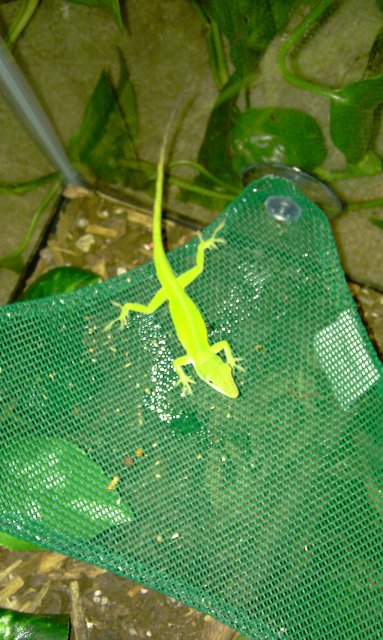 anole
Questionmy anole
QUESTION: my green anole isnt e
anole
Questionmy anole
QUESTION: my green anole isnt e
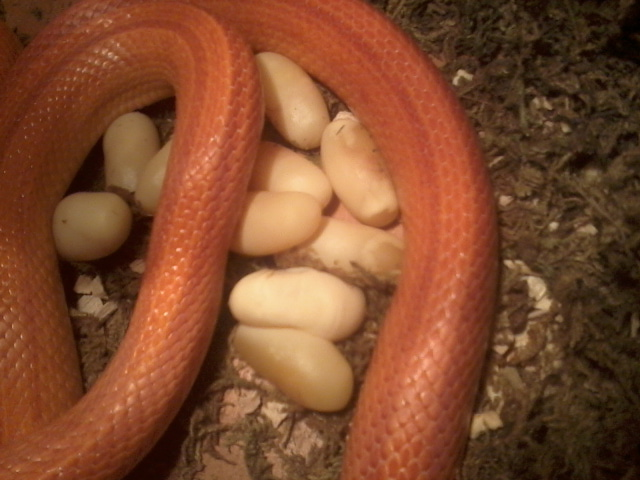 eggs
QuestionQUESTION: Hi me again it wouldnt let me carry o
eggs
QuestionQUESTION: Hi me again it wouldnt let me carry o
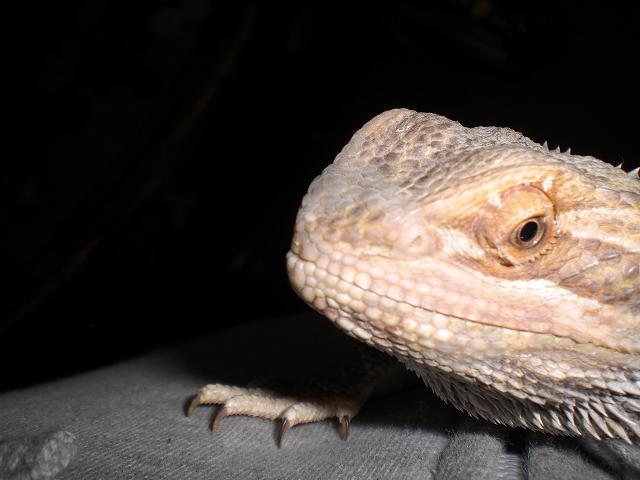 spots
Question
my dragon
In the past week my bread dragon has
spots
Question
my dragon
In the past week my bread dragon has
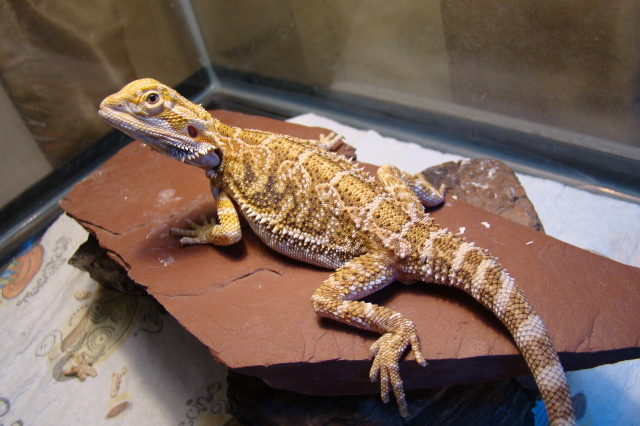 constipation
QuestionQUESTION: My bearded dragon will be a year in t
constipation
QuestionQUESTION: My bearded dragon will be a year in t
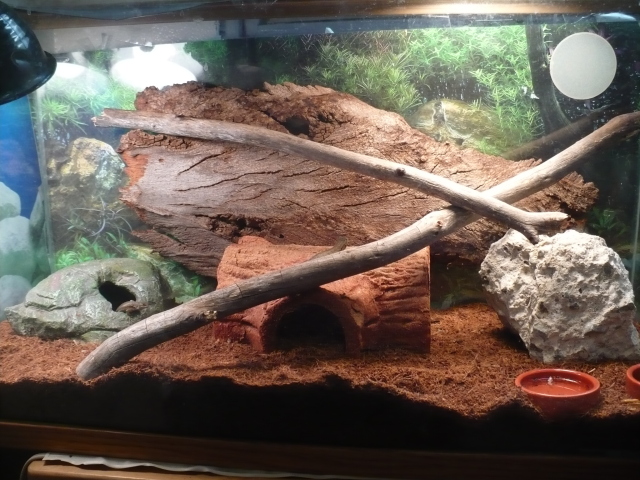 blue belly lizard - watery and smelly feces
Questionlews bellies 2 023
QUESTION: Hello, and
blue belly lizard - watery and smelly feces
Questionlews bellies 2 023
QUESTION: Hello, and